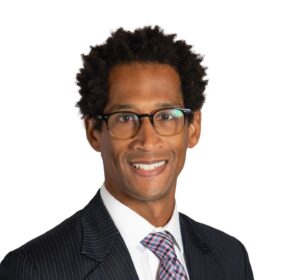What if 2 Types of Education Reform — Charter Schools and Education Savings Accounts — Merged?
Mitchell: In states where charters' best practices are stifled, the solution may be to become a private school. At least 1 network is making the move

Get stories like this delivered straight to your inbox. Sign up for The 74 Newsletter
Updated
The two dominant forms of school choice, charter schools and private school vouchers, have moved on parallel tracks since the 1990s. Now, the emergence of education savings accounts could bring these paths together.
Charter schools, first established in 1991 and now educating roughly 3.7 million students, have been called many things, including labs of innovation and incubators for excellent teachers and leaders. Many charters place their mission right in the school’s name: Success Academy, Knowledge is Power Program and Excel Academy, to name a few.
But not all the descriptions are positive. As a presidential hopeful, Sen. Elizabeth Warren publicly called charters a “strain” on the system, and Sen. Bernie Sanders did the same. Others have gone so far as to accuse charter schools of implementing a new Jim Crow. More recently, the Biden administration proposed and implemented new federal rules that limit charter school autonomy and growth.
The charter landscape has become the site of entrenched education forces’ last stand. Unable to stop parents from exiting public schools for private in record numbers during the pandemic, many school boards and teachers’ unions became determined at least to block the creation of more charters. According to data compiled by the National Association of Public Charter Schools, new school openings are at their lowest levels since 1998. In Philadelphia, for instance, the school board has not approved a single new charter school since it was returned to local control by the state in 2018.
At the same time, just this year, 29 states have introduced legislation that would create education savings accounts. Iowa and Utah raced to pass the year’s first ESA bill, Arkansas recently followed suit and Florida’s latest school choice expansion is headed to Gov. Ron DeSantis’s desk. These programs allow state dollars to follow students to the educational setting selected by their parents — not to the one dictated by their zip codes. While the dollar amounts vary from state to state, the programs tend to fund students at levels between 50% and 80% of what would go to a public school.
Despite this lack of funding parity, charter school leaders (or prospective founders) should ask: What is the best path that will allow me to serve students in need of better options? In states where recalcitrant school boards stifle education best practices evidenced in many charter schools, the answer may be found in converting from a charter to a private school. Indeed, at least one charter school network, Great Hearts, is making the move.
Three things stand out as reasons why charter school leaders and board members might consider making the switch.
First, in places where charters are authorized by local public school districts, ESAs give the option of decoupling. The relationship between a charter and its authorizing school board is often a tenuous one, where charters must show they can do more with less while remaining in the district’s good graces.
Second, though not exempt from the culture wars, private schools have largely avoided the fraught standoffs seen over the last few years, which can be a tremendous challenge for school operators and limit the true goal of educating children. Furthermore, as publicly elected bodies, school boards raging against one set of curricula in 2023 may embrace the very same ideas after the next election. Private schools can remain mission-driven, and parents know what to expect, consistently, from year-to-year.
Finally, escaping public school bureaucracy helps to keep the main thing the main thing — delivering instruction to students. Recent survey data indicates that most teachers would like to spend less time on administrative work and more time teaching. But as compared to their peers at private schools, charter school educators must complete myriad compliance reports that merely document a job well done rather than adding value to a student’s experience.
Some of the best educators and school leaders I know work in charter schools, and their success often has little to do with being inextricably linked to a school district. Those schools would be just as committed to serving their communities, focused on excellent results and responsive to parents if they were organized under a slightly different section of the state education code.
In 2023, with four ESAs available to all families having been signed into law in as many months, it is clear that there is no stopping the education reform revolution. The charter sector has a golden opportunity to be part of it, or to be left behind. As ESAs expand nationwide, innovative educators will take serious note of which option allows them to best serve students. In states that have both charter regulations that burden operators and emerging private choice options, it would not be surprising to see many take a dramatically different path.
Get stories like these delivered straight to your inbox. Sign up for The 74 Newsletter

;)
